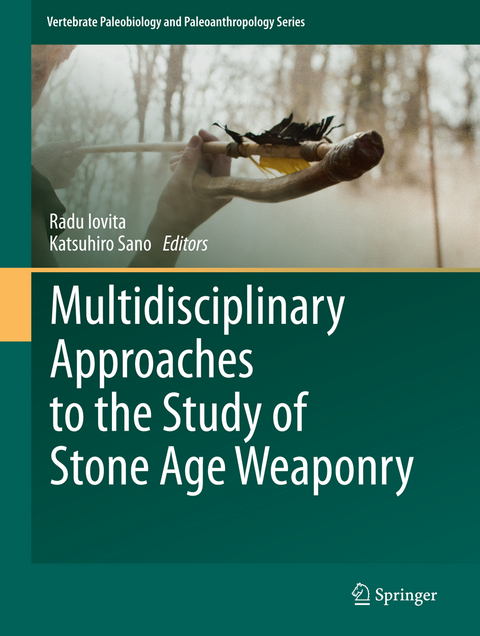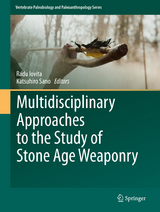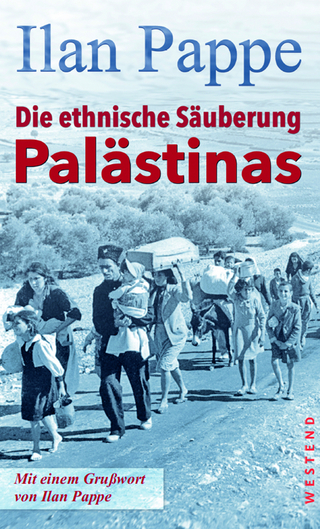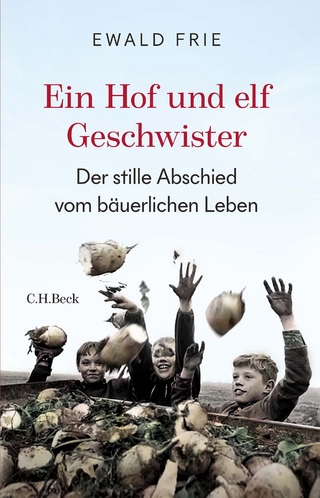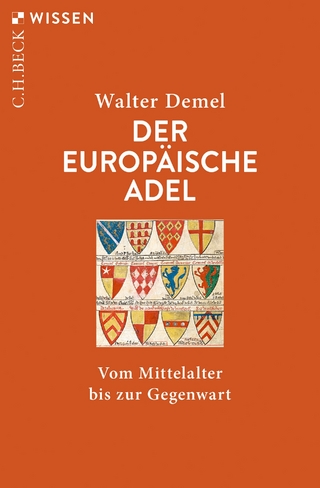Multidisciplinary Approaches to the Study of Stone Age Weaponry
Springer (Verlag)
978-94-017-7601-1 (ISBN)
New archaeological finds and experimental studies have helped to bring this subject back to the forefront of human origins research. In the last few years, investigations have expanded beyond examining the tools themselves to include studies of damage caused by projectile weapons on animal and hominin bones and skeletal asymmetries in ancient hominin populations. Only recently has there been a growing interest in controlled and replicative experiments. Through this book readers will be updated in the state of knowledge through a multidisciplinary scientific reconstruction of prehistoric weapon use and its implications.
Contributions from expert authors are organized into three themed parts: recognizing weapon use (experimental and archaeological studies of impact traces), performance of weapon systems (factors influencing penetration depth etc.), and behavioral and evolutionary ramifications (cognitive and ecological effects of using different weapons).
Dr. Radu Iovita is a paleoanthropologist and paleolithic archaeologist, currently working at the MONREPOS Archaeological Research Centre and Museum in Neuwied, Germany. His research focuses on experimental approaches to technological evolution and in human migration and adaptation to environmental change in the Eurasian loess steppe. Dr. Katsuhiro Sano is an assistant professor at the University of Tokyo. His research interests revolve around temporal advances in technology and function of prehistoric stone tools, especially prehistoric hunting technology.
1
When is a Point a Projectile? Morphology, Impact Fractures, Scientific
Rigor, and the Limits of Inference.- Identifying Weapon Delivery Systems Using Macrofracture Analysis
and Fracture Propagation Velocity: A Controlled Experiment.- 3 Experiments in
Fracture Patterns and Impact Velocity with Replica Hunting Weapons from Japan.-
4 Thirty
Years of Experimental Research on the Breakage Patterns of Stone Age Osseous
Points. Overview, Methodological Problems and Current Perspectives.- 5 Levers, Not Springs: How a
Spearthrower Works and Why it Matters.- 6 Hunting Lesions in Pleistocene and Early
Holocene European Bone Assemblages and their Implications for Our Knowledge on
the Use and Timing of Lithic Projectile Technology.- 7 Edge Damage on
500-thousand-year-old Spear Tips from Kathu Pan 1, South Africa: the Combined
Effects of Spear Use and Taphonomic Processes.- 8 Projectile Damage and Point Morphometry at the Early Middle Paleolithic
Misliya Cave, Mount Carmel (Israel): Preliminary Results and Interpretations.- 9 Morpho-metric Variability of Early
Gravettian Tanged “Font-Robert” Points, and Functional Implications.- 10 Early Gravettian Projectile
Technology in Southwestern Iberian Peninsula: the Double Backed and Bipointed
Bladelets of Vale Boi (Portugal).- 11 Uncertain Evidence for Weapons and Craft Tools: Functional
Investigations of Australian Microliths.- 12 Projectiles and Hafting Technology.- 13 Testing Archaeological Approaches
to Determining Past Projectile Delivery Systems using Ethnographic and
Experimental Data.- 14 Penetration,
Tissue Damage, and Lethality of Wood- Versus
Lithic-Tipped Projectiles.- 15 Experimental and Archeological Observations of Northern Iberian
Peninsula Middle Paleolithic Mousterian Point Assemblages. Testing the
Potential Use of Throwing Spears among Neanderthals.- 16 More to the Point: Developing an
Multi-Faceted Approach to Investigating the Curation of Magdalenian Osseous
Projectile Points.- 17 Survivorship Distributions in Experimental Spear Points: Implications
for Tool Design and Assemblage Formation.- 8 Morphological
Diversification of Stemmed Projectile Points of Patagonia (Southernmost South
America). Assessing Spatial Patterns by Means of Phylogenies and Comparative
Methods.- 19 Hunting Technologies during the Howiesons Poort at
Sibudu Cave: What They Reveal about Human Cognition in KwaZulu-Natal, South
Africa, between ~ 65 and 62 ka.- 20 Summary and Conclusions.
| Erscheinungsdatum | 08.10.2016 |
|---|---|
| Reihe/Serie | Vertebrate Paleobiology and Paleoanthropology |
| Zusatzinfo | 98 Illustrations, color; 70 Illustrations, black and white; XVII, 303 p. 168 illus., 98 illus. in color. |
| Verlagsort | Dordrecht |
| Sprache | englisch |
| Maße | 210 x 279 mm |
| Themenwelt | Geisteswissenschaften ► Archäologie |
| Geisteswissenschaften ► Geschichte ► Allgemeines / Lexika | |
| Geschichte ► Teilgebiete der Geschichte ► Kulturgeschichte | |
| Naturwissenschaften ► Biologie ► Evolution | |
| Naturwissenschaften ► Biologie ► Zoologie | |
| Naturwissenschaften ► Geowissenschaften ► Mineralogie / Paläontologie | |
| Sozialwissenschaften ► Ethnologie | |
| Sozialwissenschaften ► Soziologie | |
| Schlagworte | Experimental Studies • magdalenian osseous projectile points • projectile delivery systems • projectile impact fractures • stone age weaponry • weapon curation • weapon performance |
| ISBN-10 | 94-017-7601-6 / 9401776016 |
| ISBN-13 | 978-94-017-7601-1 / 9789401776011 |
| Zustand | Neuware |
| Informationen gemäß Produktsicherheitsverordnung (GPSR) | |
| Haben Sie eine Frage zum Produkt? |
aus dem Bereich
